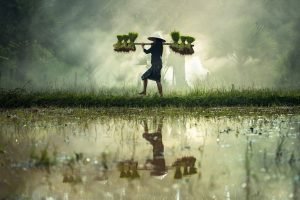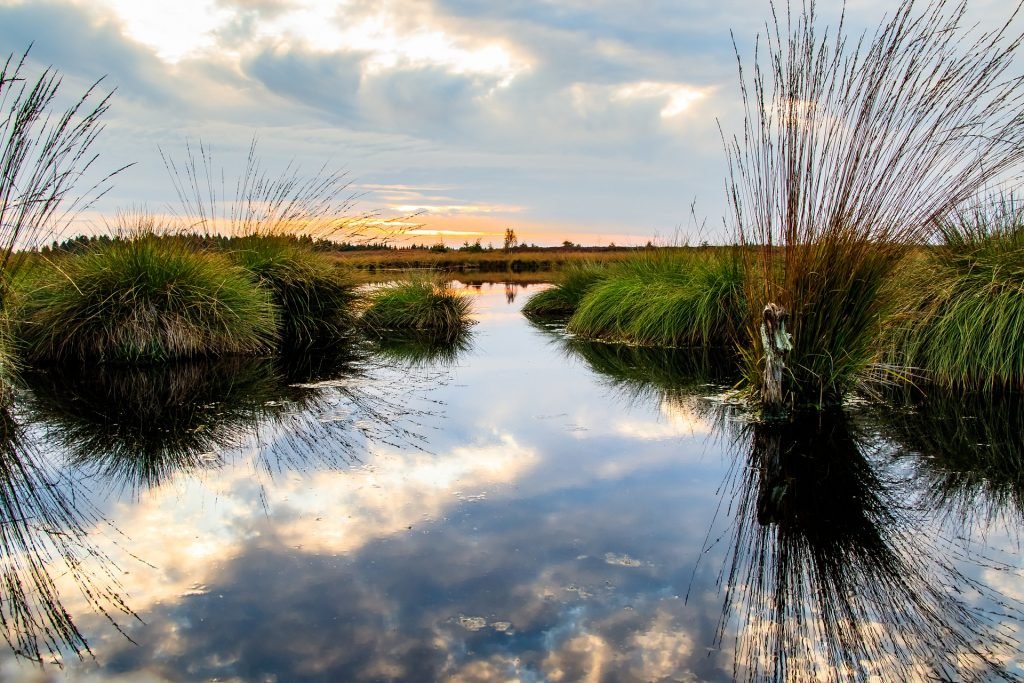What is Wetlands Day?
Like we have he cancer awareness day, Aids awareness day similarly we have World Wetlands Day an awareness for wetlands. It is celebrated on 2nd of February every year. In 1971 2nd February World Wetlands Day convention was adopted. The first time it was celebrated on 1997. Set up to bring issues to light about the estimation of wetlands for humankind and the planet, WWD was praised without precedent for 1997 and has developed astoundingly from that point forward. Every year, government offices, non-governmental associations, and gatherings of natives at all dimensions of the network, have exploited the chance to attempt activities went for raising open consciousness of wetland esteems and advantages. To better understand Wetlands we need to understand first what are Wetlands, what function they perform? Why are they necessary for our Planet.
What are Wetlands?
A wetland is an unmistakable ecosystem that is immersed by water, either for all time or occasionally, where oxygen-free procedures prevail. The essential factor that recognizes wetlands from other land structures or water bodies is  the trademark vegetation of aquatic plants, adjusted to the extraordinary hydric soil. Wetlands play various capacities, including water cleansing, water stockpiling, handling of carbon and different supplements, adjustment of shorelines, and backing of plants and creatures. Wetlands are likewise viewed as the most naturally diverse of all Ecosystems, filling in as home to a wide scope of plant and creature life.
the trademark vegetation of aquatic plants, adjusted to the extraordinary hydric soil. Wetlands play various capacities, including water cleansing, water stockpiling, handling of carbon and different supplements, adjustment of shorelines, and backing of plants and creatures. Wetlands are likewise viewed as the most naturally diverse of all Ecosystems, filling in as home to a wide scope of plant and creature life.
Wetlands are dynamic aquatic ecosystems discovered everywhere throughout the world. A wetland is a territory of land that is immersed with water either forever or regularly. Wetlands can be freshwater, bitter (mostly salty), or saline (exceptionally salty).
Wetlands are known as the world’s ‘kidneys’ in light of the fact that, similar to your kidneys, they serve the imperative capacity of separating water. As water travels through a wetland, the silt and toxins ‘stick’ in the wetland, making the water more clean. Wetlands likewise help decrease flooding and avert shoreline disintegration.
Types Of Wetlands:
Five major wetland types are generally recognized:
• marine (coastal wetlands including coastal lagoons, rocky shores, and coral reefs)
• estuarine (including deltas, tidal marshes, and mangrove swamps)
• lacustrine (wetlands associated with lakes)
• riverine (wetlands along rivers and streams)
• palustrine (meaning “marshy” – marshes, swamps and bogs).
Moreover, there are human-made wetlands, for example, fish and shrimp lakes, ranch lakes, watered agriculture land, salt skillet, stores, rock pits, sewage homesteads and waterways. The Ramsar Convention has embraced a Ramsar Classification of Wetland Type which incorporates 42 types, gathered into three classifications: Marine and Coastal Wetlands, Inland Wetlands, and Human-made Wetlands.

What is Ramsar Convention?
The Ramsar Convention on Wetlands of International Importance particularly as Waterfowl Habitat is an International Treaty for the preservation and economical utilization of wetlands. It is otherwise called the Convention on Wetlands. It is named after the city of Ramsar in Iran, where the Convention was marked in 1971.
The Ramsar Convention, is the intergovernmental Treaty that gives the system to the protection and insightful utilization of wetlands and their assets. The Convention was started in the Iranian city of Ramsar in 1971 and came into power in 1975. From that point forward, practically 90% of UN part states, from all the world’s geographic areas, have acquiesced to wind up “Contracting Parties”.

What Does Wetlands Do?
These incorporate the capacity of water, change of supplements, development of living matter, and decent variety of wetland plants, which have an incentive for the wetland itself, for encompassing ecosystems, and for individuals. Capacities can be gathered comprehensively as environment, hydrologic, or water quality, in spite of the fact that these qualifications are fairly self-assertive and shortsighted. For instance, the estimation of a wetland for entertainment (chasing, angling, flying creature viewing) is a result of the considerable number of procedures that cooperate to make and keep up the wetland.
The elements of a wetland and the estimations of these capacities to human culture rely upon a mind boggling set of connections between the wetland and alternate ecosystems in the watershed. A watershed is a geographic territory in which water, residue and broke up materials channel from higher heights to a typical low-lying outlet or bowl or a point on a bigger stream, lake, basic aquifer or estuary.
Wetlands’ microbes, plants and natural life are a piece of worldwide cycles for water, nitrogen and sulfur. Moreover, scientists are starting to understand that atmospheric support might be an extra wetlands work. Wetlands store carbon inside their plant networks and soil as opposed to discharging it to the environment as carbon dioxide. Along these lines, wetlands help to direct worldwide climate conditions.
What’s more, wetlands have uncommon qualities as a component of the social legacy of humankind: they are identified with religious and cosmological convictions, comprise a wellspring of stylish motivation, give natural life havens, and structure the premise of essential nearby customs.
Why Conservation of Wetlands is Important?
Wetland conservation is vital for ensuring and safeguarding regions where water exists at or close to the Earth’s surface, for example, bogs, bogs and lowlands. Wetlands spread across seven percent (7%) of the Earth and have turned into a central issue for protection because of the ecosystem administrations they give. In excess of three  billion individuals, around a large portion of the total populace, acquire their essential water needs from inland freshwater wetlands. A similar number of individuals depend on rice as their staple nourishment, a harvest developed to a great extent in normal and counterfeit wetlands. In a few sections of the world, for example, the Kilombero wetland in Tanzania, nearly the whole neighborhood populace depends on wetland development for their occupations
billion individuals, around a large portion of the total populace, acquire their essential water needs from inland freshwater wetlands. A similar number of individuals depend on rice as their staple nourishment, a harvest developed to a great extent in normal and counterfeit wetlands. In a few sections of the world, for example, the Kilombero wetland in Tanzania, nearly the whole neighborhood populace depends on wetland development for their occupations
Filtration:
Wetlands help in water filtration by evacuating abundance supplements, abating the water enabling particulates to settle out of the water which would then be able to be ingested into plant roots. Studies have appeared up to 92% of phosphorus and 95% of nitrogen can be expelled from going water through a wetland. Wetlands likewise given contamination a chance to settle and stick to soil particles, up to 70% of dregs in spillover. Some wetland plants have even been found with aggregations of substantial metals in excess of multiple times that of the encompassing waters’ focus. Without these capacities, the conduits would constantly expand their supplement and contamination load, prompting a separated store of high fixations sometime later. A case of such a circumstance is the Mississippi River’s no man’s land, a territory where supplement abundance has prompted a lot of surface green growth, which go through the oxygen and make hypoxic conditions (low dimensions of oxygen)
Storage:
Wetlands can store approximately 1-1.5 million gallons of floodwater per acre. When you combine that with the approximate total acres of wetlands in the United States (107.7 million acres), you get an approximate total of 107.7 – 161.6 million million gallons of floodwater US wetlands can store. By storing and slowing water, wetlands allow groundwater to be recharged. “A 550,000 acre swamp in Florida has been valued at $25 million per year for its role in storing water and recharging the aquifer.” And combining the ability of wetlands to store and slow down water with their ability to filter out sediments, wetlands serve as strong erosion buffers.

Conclusion:
After explaining all the the matters related to Wetlands it is sure that we need Wetlands for survival of life on this Planet. 7% of Earth is covered by Wetlands out of which more than 60% is degraded. But still it absorbs a huge amount of Carbon and wastewater and provides us the the gifts of nature. The degraded Ecosystems can be restored all it need a will, to change to see the things differently and to affirm the belief that we want Wetlands more than anything else.


I have read a few good stuff here. Definitely price bookmarking for revisiting.I wonder how a lot effort you put to make this type of excellent informative web site.LikeLike
I appreciate you sharing this blog article. Much obliged.
I appreciate, result in I discovered just what I was taking alook for. You’ve ended my 4 day lengthy hunt! God Bless you man. Have a nice day.Bye
Say, you got a nice blog post.Thanks Again.